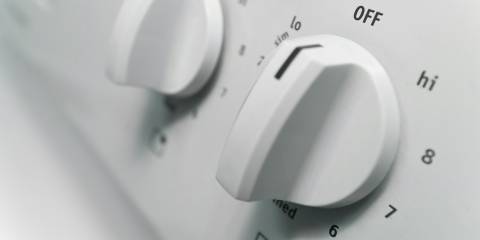Illness does not keep American workers away from the workplace according to a survey from NSF International. The global public health and safety organization, which has done extensive research on germs in the home, recently commissioned a survey of employed Americans to understand their views on going to work sick.
Data on Sickness in The Workplace
How Many People Go to Work Sick?
The survey found that one-quarter (26 percent) of American workers always go to work when they are sick. An additional one-third (34 percent) wait until they experience the full effect of their symptoms before deciding to stay home.
This highlights the importance of handwashing and other prevention strategies to avoid getting sick this cold and flu season.
Why Don't Sick Workers Stay Home?
-
Schedule and Workload
Four in 10 (42 percent) of American workers say they come to work sick because they have deadlines or would have too much work to make up when they return to the workplace after a sick day.
-
Financial Concerns
Nearly as many (37 percent) say they can’t afford to be sick and miss work.
-
Employer Demands
One-quarter (25 percent) of American workers claim that they go to work when they are sick because their boss expects them to come to work no matter what.
Do Men Work Sick More than Women Do?
Another interesting finding was that men (33 percent) are nearly twice as likely as women (17 percent) to go to work when sick.
How Do People Avoid Getting Sick at Work?
Nearly all American workers (94 percent) take some form of precaution when coming in contact with a sick co-worker. From washing their hands (87 percent) to using hand sanitizer (68 percent) or making an effort to avoid sitting or standing near a sick co-worker (54 percent), working Americans seem to be careful to avoid close contact with germs.
Others disinfect their workspace when a sick co-worker leaves their space (44 percent), take a vitamin or supplement (39 percent) or avoid eating in or using common areas like break rooms, kitchens and cafeterias (32 percent).
How Do People Feel About The Working Sick?
While some might consider it a personal decision to power through an illness and go to work, the survey found that a majority of Americans (90 percent) indeed judge their co-workers when they come to work sick; however, their feelings aren’t always negative.
-
Work Ethic
When asked how workers feel about their co-workers coming to work sick, two-thirds (67 percent) of respondents consider their sick co-workers to be hard workers.
-
Financial Sympathy
Additionally, 57 percent responded that they believe sick colleagues can’t afford to miss work.
-
Perceived Attitude
Only 16 percent of workers felt that colleagues who came to work sick were selfish and didn’t care about the well-being of their co-workers, and 13 percent believed co-workers come to work sick because they don’t trust their colleagues to do the job while they are out.
What Do People Want Their Co-Workers to Do?
Most Americans are very transparent and honest regarding their feelings on sick colleagues.
-
Just Go/Stay Home
A majority of Americans (57 percent) would tell a sick co-worker to go home if they thought he/she was too sick to be at work.
-
Be Mindful of Shared Spaces and Tools
Additionally, Americans would not hesitate to ask their ill colleagues to refrain from entering their workspace (26 percent) or using their work supplies like staplers, computer, etc. (24 percent).
Basic Tips for a Healthy Workplace
-
Practice Hygiene
“The best thing you can do to avoid getting sick at work is to take defensive measures,” said Rob Donofrio, Ph.D., microbiologist at NSF International. “Proper handwashing with soap and warm water is still, by far, the best way to prevent the spread of germs and bacteria.
-
Regularly Disinfect
Similarly, disinfecting common areas like the office kitchen or eating area, copy machine and printer can be crucial to keeping germs at bay.”
-
Be Mindful of Others
“If you are sick, try to stay home and rest at the onset of your symptoms when you are most contagious. However, if you must go into work, be conscientious of those around you,” continued Donofrio. “Fully cover your mouth when coughing or sneezing, wash your hands often, disinfect areas you come into contact with – especially in common areas – and try to keep your distance from co-workers."
"It’s important for all employees to keep health top of mind in the workplace.”
More from NSF International
Consumer Resources
- Check out more results in detail this infographic on Flu in The Workplace.
- For more information on avoiding the spread of germs, visit NSF International's Germ Studies.
- For tips on teaching children about proper handwashing to prevent the spread of germs, visit The Scrub Club.
Survey Methodology
This report presents the findings of a telephone survey conducted among two national probability samples, which, when combined, consists of 1,003 adults, 502 men and 501 women, 18 years of age and older, living in the continental United States. Interviewing for this CARAVAN® Survey was completed on January 23-26, 2014. 652 interviews were from the landline sample and 351 interviews from the cell phone sample. The total sample collected for Working Americans is 493 respondents.



